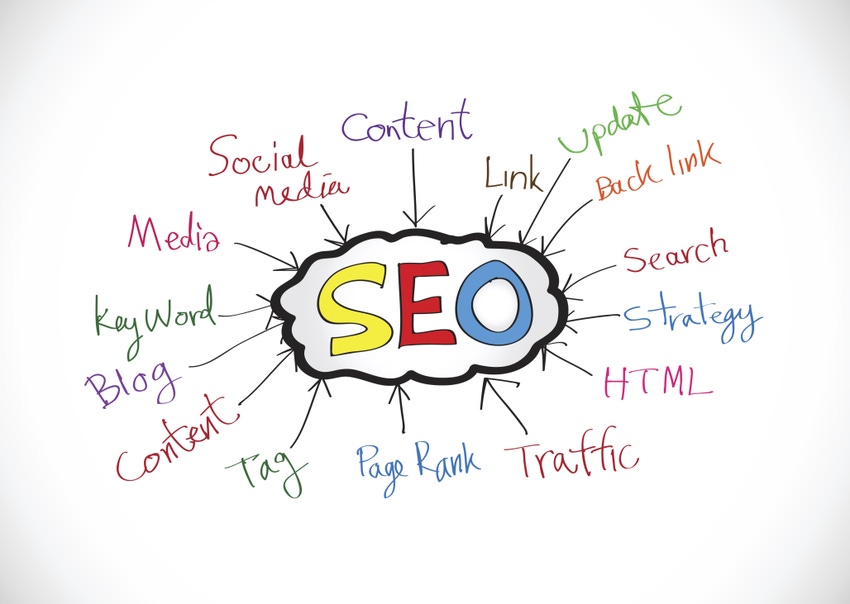SEO is a murky area for MSPs starting up web marketing. There are so many “experts” out there telling you how to optimize your site for Google and other search engines, and one piece of advice tends to conflict with another. Here’s the simple answer: Stop obsessing over SEO and start stressing over SED.

SEO is a murky area for MSPs starting up web marketing. There are so many “experts” out there telling you how to optimize your site for Google and other search engines, and one piece of advice tends to conflict with another.
Here’s the simple answer: Stop obsessing over SEO and start stressing over SED
What is SED? Search Engine Domination!
You should not be trying to tweak your site to appeal primarily to search engines. That’s a surefire way of alienating real prospects, and is actually more likely to hurt your rankings with Google. What you should be focused on is the quality of your content. It’s time for Content Optimization – the future of SEO.
To get you started, here are some Do’s and Don’ts of SED for MSPs:
DO: Create website pages and blogs around single topics.
DON’T: Shove a bunch of keywords onto a single page.
Gone are the days when you could just cram in 50 keywords on a page of content and get good search results. Choose one topic, keyword, or key phrase and use it no more than three times on the page: Once in the header, once near the beginning of the body content, and once again near the end. That’s it.
DO: Write the page for a human reader.
DON’T: Use awkwardly phrased keywords.
All of your content should be written for human readers, not for search engines. Before you publish anything, try reading it out loud to yourself. Does it sound normal? It should be easy to read and simple to understand.
The surest way to make your content unappealing for humans is to jam in keywords where they don’t belong. If it sounds awkward to read a phrase out loud, move it or take it out entirely. Always err on the side of readability.
DO: Create a blog and share your content across social media.
DON’T: Spam links to your pages on useless websites.
Update your blog regularly, and make use of sites like LinkedIn, Facebook, Twitter, and Google+. Spread tips and tricks, news stories, how-to guides, and anything else you think your readers would find useful. Ask readers to share the story! Include links back to your website.
Do NOT just spam links on random websites that do nothing but aggregate posts. The point of link building is to get readers to find out. If you don’t expect anyone but a search engine to find a link, it’s not a worthwhile link to build.
DO: Include relevant and eye-catching images and videos.
DON’T: Neglect your written content.
Relevant is the key word here. Avoid pictures of ladies standing next to servers with their arms crossed over their chests. Videos shouldn’t be too long, and should complement the written content on the page they share – there should be a reason for the pictures and videos to appear on each page of your site.
Text, images, and videos should go together on your pages and lead into each other. If all three are relevant, they provide different ways for Google to rank your page.
DO: Hire a good website designer to make your site accessible.
DON’T: Waste your time hiring an “SEO expert.”
Any good web designer will ensure your site is SEO accessible – that the headers and tags are clean, the page content is clear and understandable, and that there’s a good balance of content with design. Those are the basics you need to start with.
Be very careful about hiring someone to “tweak” your existing site to make it more SEO friendly. So long as you’ve done the groundwork with a well-designed site and are including high quality content, you should be fine. Most tricks that an “SEO expert” will perform won’t help – and some may even hurt.
DO: Include useful downloads for your readers to take away.
DON’T: Force readers to jump through too many hoops to get that download.
Helpful downloads are an amazing tool for generating good will and creating leads from visitors to your site. Publish white papers, infographics, tips and tricks, FAQs, and other things they can download and use regardless of whether they’re your client. They’ll appreciate it and be more likely to call you.
Don’t create 18 hoops for the reader to jump through just to get the download, though. A simple lead-generation form is fine – don’t bother with email verification, Captcha codes, or any of that. Make it as easy as possible for the reader while still getting you the information you need for your lead.
Wondering what kind of content readers find useful? Here are some of the best-ranking types of content we’ve found:
Guides on the services YOU use for your own business
Infographics on any topic
Short (no more than 3 minute) videos
Tips and tricks on new technology
Security and compliance checklists
Interviews with subject matter experts
Question & answer articles
Case studies with real-world clients
And here’s the final, uncomfortable truth: This is not a quick process.
If you think you’re going to see long-lasting results after a few days of SEO work, you’re dreaming. Online marketing is a long-term game that you need to put the work into. If you keep publishing good quality content and do the work, you WILL see results. You just need to get over the idea that there’s an Easy Button for web marketing and be patient. Good things will come.
Embrace better marketing for your MSP by turning to the team at Ulistic. SEO is only a part of our overall MSP marketing strategy, and we are CONTENT experts first. We’ll help you create unique, appealing content to draw in readers, impress prospects, and create more leads. Only 1 in 100 IT firms think marketing first, but 100 out of 100 want more leads. Ulistic staff are masters at creating a Search Engine Domination strategy for managed service companies. Ulistic is here to help managed services providers think strategically about their marketing to get more leads while still focusing on running their business. Our team engages with your team every day, providing expert marketing materials and advice to create a foundation for stratospheric success. Learn more at Ulistic.com.
About the Author(s)
You May Also Like


